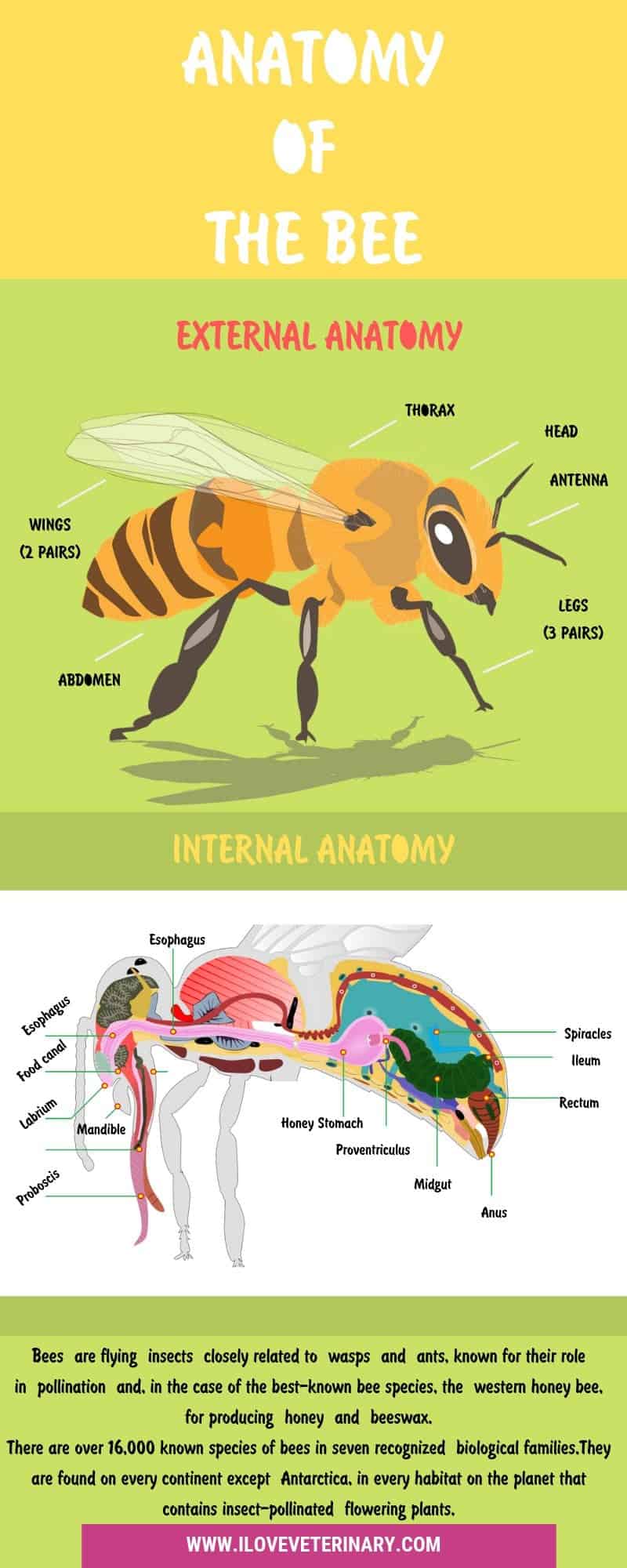In June we are celebrating National Pollinator Week, 17th-23rd to be exact. To honor the pollinators, we decided to dedicate this article to one of the most known pollinators, the bee. On the infographic below, you can learn more about the anatomy of the bee.
Bee Anatomy
We can safely say that the bee is an extraordinary insect. The bee anatomy just proves it.
The bees have an exoskeleton, which is the hard outer shell of their bodies. They are equipped with two pairs of wings for flying and three pairs of legs for walking. Their body consists of three main body parts: head, thorax and abdomen. On their head they have antennae.
Why are bees so important?
Every day we read in the news that bees are facing extinction, and with their extinction, we are facing the demise of our planet. Bees are so vulnerable today because of the excessive use of pesticides and certain blood-sucking parasites that can only reproduce in bee colonies. If bees go extinct, so would humanity. We also celebrate these amazing creatures during World Bee Day, which happens in May.
Let’s talk about what bees are and their purpose
Bees are flying insects closely related to wasps and ants, known for their role in pollination and, in the case of the best-known bee species, the western honey bee, for producing honey and beeswax.
There are over 16,000 known species of bees in seven recognized biological families. They are found on every continent except Antarctica, in every habitat on the planet that contains insect-pollinated flowering plants.
Some species including honey bees, bumblebees, and sting-less bees live socially in colonies. Bees are adapted for feeding on nectar and pollen, the former primarily as an energy source and the latter primarily for protein and other nutrients. Most pollen is used as food for larvae.

